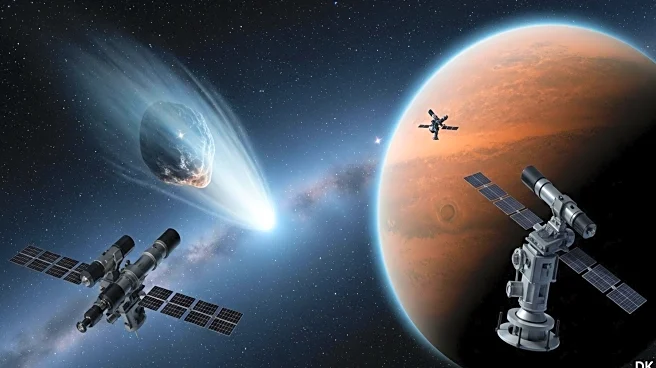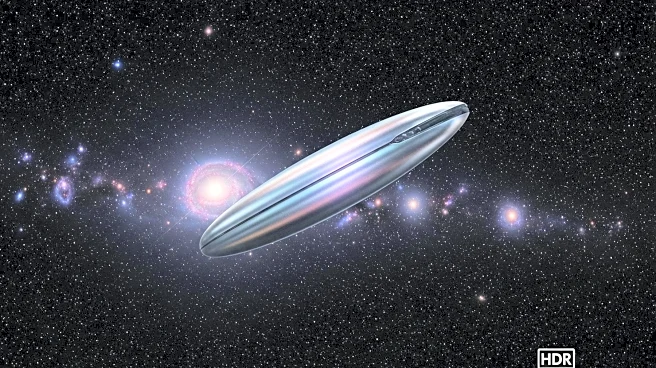What's Happening?
An interstellar comet, designated 3I/Atlas, is set to pass by Mars on Friday, coming within 18 million miles of the planet. This event marks the comet's closest approach during its journey through the inner solar system. The European Space Agency's satellites, along with NASA's satellite and rovers on Mars, are preparing to observe this rare celestial visitor. Discovered in July, the comet poses no threat to Earth or other planets. It will reach its closest point to the sun at the end of October and will pass closest to Earth in December, at a distance of 167 million miles.
Why It's Important?
The passage of 3I/Atlas offers a unique opportunity for scientists to study an interstellar object, only the third of its kind known to have entered our solar system. Observations from this event could provide valuable insights into the composition and behavior of comets originating from outside our solar system. This knowledge could enhance our understanding of the universe and the processes that govern celestial bodies. The event also underscores the importance of international collaboration in space exploration, as agencies like NASA and ESA work together to maximize scientific returns.
What's Next?
Following its close approach to Mars, the comet will continue its journey through the solar system, with further observations planned as it nears the sun and Earth. Scientists will analyze data collected during these observations to gain a deeper understanding of the comet's properties. The findings could inform future missions and research on interstellar objects, potentially leading to new discoveries about the origins and evolution of the solar system.











